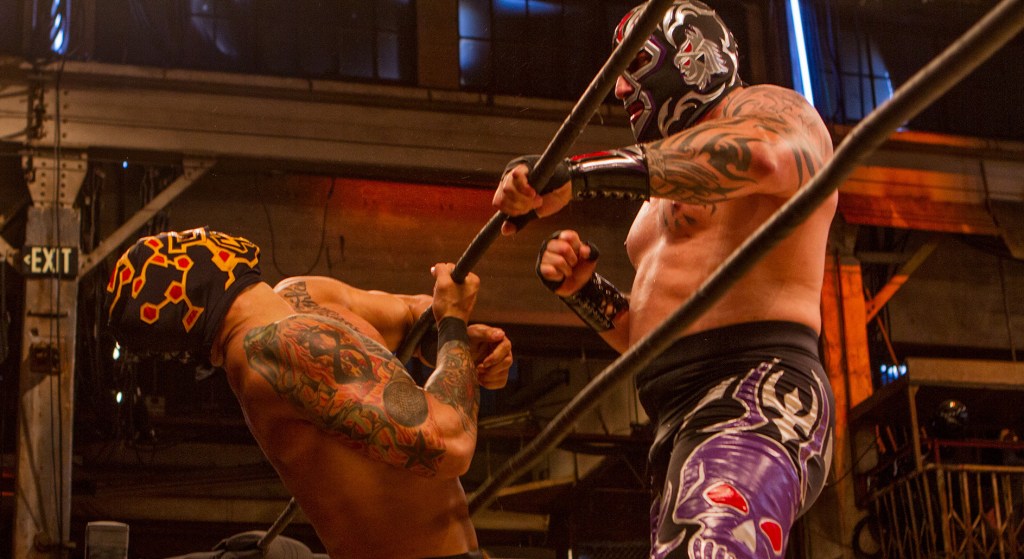The influence of Lucha Libre on the WWE and the North American wrestling landscape in general is impossible to ignore.
Lucha Libre’s origins go back as far as the 1800s, although it didn’t gain widespread recognition until the Empresa Mexicana de Lucha Libre (Mexican Wrestling Enterprise) was founded in the 1930s.
Its impact on the modern era can be seen in numerous areas, with the Lucha Libre slot machine sometimes seen in casinos arguably one of the more inventive uses of the culture’s imagery.
El Santo is the most famous exponent of the art, eventually crossing over into the mainstream by becoming a film star during the 1950s.
Many of today’s luchadores follow El Santo’s lead by never revealing their faces or true identities. Spectacularly colored masks are worn to hide identities, with traditional luchadores even wearing them and their costumes outside the ring.
Lucha Libre generally features fast-paced action and high-flying moves, with bouts often taking place both inside and outside the ring.
Much like traditional professional wrestling, Lucha Libre matches feature good guys (tecnicos) against bad guys (rudos) with fans wildly cheering for the tecnicos and booing the rudos.
Many of the features of Lucha Libre have infiltrated the pro-wrestling scene, with masked wrestlers appearing in promotions across the world.
La Parka and Rey Mysterio are amongst the masked men who have enjoyed success in the WWE, while other Mexican wresters such as Alberto Del Rio and Eddie Guerrero have also made their mark.
The increased acknowledgement of Lucha Libre reflects the changing demographics in the United States.
According to CNN, the 2015 Census reported there are an estimated 54 million Hispanic people in the USA, comprising over 17 percent of the population.
Spanish is the second most used language in the US, with over 40 million people speaking it on a regular basis.
These demographic changes have seen new promotions spring up, including Lucha Underground. However, Cagesideseats says the promotion is currently struggling to meet its financial targets in the face of stiff competition.
Its troubles come as something as a surprise, with the Lucha Libre style loved by the wrestling community over the past few years.
Going back as far as 1994, top wrestling officials identified Lucha Libre as something it could tap into.
Eric Bischoff, the man behind Ted Turner’s WCW, teamed up with the Mexican promotion AAA to showcase their ‘When Worlds Collide’ event to an American PPV audience.
This opened the door for the likes of Mysterio and Guerrero to shoot up the wrestling ladder and a Lucha Underground link-up with the WWE in the future would appear to make sense for all concerned.
The world’s top promotion would have a proving ground where it could cherry pick the next generation of Lucha Libre-style stars, while Lucha Underground could continue to offer its unique brand of wrestling safe in the knowledge its financial future was secured.
Whatever the future holds for the troubled promotion, the shift in demographics in the USA guarantees that Lucha Libre will continue to influence the North American wrestling scene for years to come.








